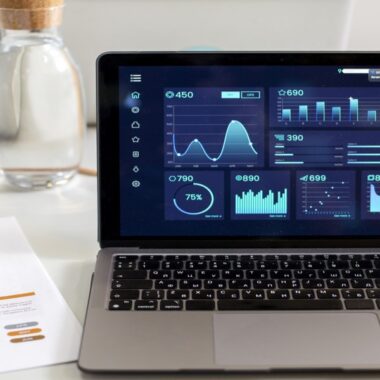Summary:- Get ready for your interview with the latest data analyst interview questions and answers for 2025. This guide covers technical, industry-specific, and scenario-based questions to help you succeed. Master SQL, problem-solving, and data visualization to stand out in job interviews.
Introduction
Data analytics is booming! In 2022, it was worth $41.05 billion; by 2030, it’s set to skyrocket to $279.31 billion. That’s a massive 27.3% growth! With North America leading the charge, companies are hunting for skilled Data Analysts like never before.
If you’re gearing up for an interview, you’re in the right place! This guide will walk you through the latest data analyst interview questions and answers—from SQL to case studies. Our goal? To help you ace that interview with confidence. Let’s dive into the must-know skills and questions that will set you apart!
Key Takeaways
- Interviewers assess both technical and problem-solving skills through SQL, case studies, and real-world scenarios.
- Understanding industry-specific metrics helps you stand out in finance, healthcare, e-commerce, and marketing roles.
- Strong communication skills are crucial for presenting data insights to non-technical stakeholders.
- Practical experience with SQL, Python, and data visualization tools boosts your chances of securing a Data Analyst role.
- Enroll in a Data Science course by Pickl.AI to gain hands-on experience and improve your career prospects.
General Data Analyst Interview Questions
Hiring managers ask general questions to understand your background, analytical thinking, and communication skills. These questions help them assess whether you are the right fit for the role. Preparing clear and confident answers can improve your chances of success. Below are some common general interview questions for a Data Analyst role in 2025.
1. Tell us about yourself and your experience in data analysis.
Answer: I have worked as a Data Analyst for [X years], focusing on collecting, cleaning, and analyzing data to support business decisions. I have experience with tools like SQL, Python, and Tableau. In my previous role, I helped improve reporting efficiency by automating data pipelines.
2. What steps do you follow to analyze a dataset?
Answer: First, I understand the problem statement and business goal. Then, I clean the data, handle missing values, and explore patterns. After that, I perform statistical analysis or build models, interpret insights, and create visualizations to present findings.
3. How do you handle missing or inconsistent data?
Answer: I start by checking the percentage of missing data. If it’s small, I remove those records. Otherwise, I use techniques like mean/median imputation or predictive modeling. For inconsistencies, I standardize formats and validate data sources.
4. Can you explain a data-driven decision you made?
Answer: In my previous role, I analyzed customer churn data and identified key factors affecting retention. Based on my insights, the company adjusted its marketing strategy, reducing churn by 15%.
5. Why do you want to work as a Data Analyst?
Answer: I enjoy working with data to uncover insights that drive business growth. Problem-solving and making data-driven decisions excite me, and I want to contribute my analytical skills to help businesses succeed.
Technical Questions on SQL and Databases
SQL is one of the most essential skills for a Data Analyst. Interviewers test your ability to retrieve, manipulate, and analyze database data. They also assess your understanding of database structures and query optimization. Below are some key SQL and database-related questions you may encounter in a Data Analyst interview.
1. What is the difference between WHERE and HAVING in SQL?
Answer: The WHERE clause filters rows before grouping, while HAVING filters groups after aggregation. For example, you use WHERE to filter raw data and HAVING to filter grouped results in a GROUP BY query.
2. How do you find duplicate records in a table?
Answer: I use the GROUP BY clause along with HAVING COUNT(*) > 1 to identify duplicate values in a specific column. I can also use ROW_NUMBER() to assign ranks and filter duplicates.
3. What are indexes in SQL, and why are they important?
Answer: Indexes improve query performance by allowing the database to find data faster. They act like a book index, helping locate information without scanning the entire table. However, too many indexes can slow down inserts and updates.
4. How would you optimize a slow SQL query?
Answer: I analyze the query execution plan, use indexing, avoid unnecessary joins, limit data retrieval with SELECT specific_columns, and replace subqueries with joins or CTEs where possible.
5. What is normalization, and why is it used?
Answer: Normalization organizes data into multiple tables to reduce redundancy and improve consistency. It helps prevent data anomalies and ensures efficient storage and updates in relational databases.
Case Study and Business Problem-Solving Questions
Data Analysts solve real-world business problems using data. Interviewers test your ability to analyze situations, interpret data, and recommend actionable solutions. They may present case studies or hypothetical scenarios to evaluate your problem-solving skills. Below are some common business problem-solving questions you might face in an interview.
1. How would you analyze a sudden drop in website traffic?
Answer: I would check for technical issues like server downtime or broken links. Then, I’d analyze traffic sources using Google Analytics to see if a specific channel declined. I’d also review SEO performance and recent marketing changes to identify possible causes.
2. A company’s product sales have declined. How would you investigate the issue?
Answer: I would analyze historical sales data to spot trends. Then, I’d segment customers by region, product category, and time period. I would also check external factors like market competition and economic conditions. Based on insights, I’d suggest improvements.
3. How do you measure the success of a new product launch?
Answer: I would track key metrics such as sales numbers, customer engagement, conversion rates, and user feedback. Comparing performance against forecasts and similar product launches would help assess success.
4. How would you optimize a company’s marketing campaign using data?
Answer: I’d analyze customer demographics, ad performance, and conversion rates. Then, I’d identify high-performing channels, adjust budgets, and test different messaging strategies using A/B testing.
5. What steps would you take to reduce customer churn?
Answer: I would identify at-risk customers by analyzing usage patterns and feedback. Then, I’d recommend personalized offers, improve customer support, and enhance product features to increase retention.
Scenario-Based and Practical Questions
Interviewers use scenario-based questions to assess how you apply data analysis skills in real-world situations. These questions test your ability to handle unexpected challenges, interpret data, and make data-driven decisions. Employers want to see how you think critically and solve problems efficiently. Below are some practical questions you may encounter.
1. Your report contains incorrect data. How would you handle this?
Answer: First, I would verify the data source and check for errors in data extraction, transformation, or loading (ETL) processes. If needed, I’d consult relevant teams to correct the issue and update stakeholders with an accurate report.
2. You need to present complex data insights to a non-technical team. How would you do it?
Answer: I would simplify the findings using clear visuals like charts and graphs. I’d avoid technical jargon and focus on key takeaways that align with business goals. I might also use storytelling to make insights more relatable.
3. A stakeholder requests urgent analysis, but you have limited data. What do you do?
Answer: I would use available data to provide a preliminary analysis and clearly state any limitations. If needed, I’d suggest alternative data sources or assumptions to fill gaps while ensuring transparency.
4. How would you handle conflicting insights from two different datasets?
Answer: I would validate both datasets, check for inconsistencies in data collection methods, and compare timestamps. If needed, I’d consult domain experts to determine the most reliable dataset.
5. How do you prioritize tasks when working on multiple data projects?
Answer: I would assess deadlines, business impact, and dependencies. Then, I’d communicate with stakeholders, set clear priorities, and break tasks into manageable steps to ensure timely delivery.
Industry-Specific Data Analyst Interview Questions
Data Analysts work in various industries, each with its own data challenges and key performance metrics. Interviewers assess your understanding of industry-specific data trends, regulations, and analytical techniques. If you are applying for a role in a particular sector, expect questions tailored to that industry. Below are some common industry-specific Data Analyst interview questions.
1. In the finance industry, how would you detect fraudulent transactions?
Answer: I would analyze transaction patterns using anomaly detection techniques. I’d look for unusual spending behavior, rapid transactions, or high-value purchases in a short period. I might also use machine learning models to predict fraud based on historical data.
2. In e-commerce, what metrics would you track to measure customer engagement?
Answer: I would track metrics like bounce rate, average session duration, cart abandonment rate, and repeat purchase rate. These insights help businesses understand user behavior and optimize the shopping experience.
3. In healthcare, how would you analyze patient readmission rates?
Answer: I would segment patients based on demographics, medical history, and treatment types. Then, I’d identify readmission patterns and analyze factors like hospital stay duration, follow-up care, and medication adherence.
4. In marketing, how do you measure an ad campaign’s effectiveness?
Answer: I would analyze conversion rates, return on ad spend (ROAS), customer acquisition cost (CAC), and click-through rates. A/B testing and attribution models help understand which strategies drive engagement.
5. In supply chain management, how would you optimize inventory levels?
Answer: I would analyze historical demand, lead times, and supplier reliability. Then, I’d use predictive analytics and just-in-time (JIT) inventory models to reduce excess stock while preventing shortages.
What Can You Asked in Return?
It is important to ask questions in an interview to ensure that you are the right fit for the job and the company you are interviewing with.
Asking questions about the company itself, the position you are applying for, and the company culture will help to give you a better idea about whether this position is a good fit for you and if the company is the right fit for you as well.
Some questions you can ask are:
- What does a typical day look like in this position?
- What are some interesting projects that you worked on recently?
- How do you spend most of your time in this role?
- What sort of opportunities are available for advancement within this role?
- What do you like about working here?
- What do you dislike about working here?
Wrapping it up !!!
Mastering data analyst interview questions and answers is key to landing your dream job. By preparing for general, technical, and industry-specific questions, you boost your confidence and stand out in interviews. Whether you’re analyzing business trends or optimizing data pipelines, structured preparation ensures success.
If you want to strengthen your data analytics skills, consider enrolling in a data science course by Pickl.AI. Pickl.AI offers expert-led training, hands-on projects, and real-world case studies to help you become job-ready. Stay ahead in the fast-growing analytics field and turn your passion for data into a rewarding career!
Frequently Asked Questions
What are the key skills required for a Data Analyst role?
Key skills include SQL, Python, data visualization, statistics, and problem-solving. Strong communication skills and business acumen are also essential for translating data insights into actionable strategies.
How can I prepare for a Data Analyst interview?
Practice SQL queries, data visualization, and statistical analysis. Review case studies, industry-specific questions, and scenario-based problem-solving. Mock interviews and real-world projects can also improve your confidence.
Is coding necessary for a Data Analyst job?
Yes, coding in SQL and Python is highly beneficial for data cleaning, manipulation, and analysis. While some roles focus more on Excel and visualization tools, programming skills help automate tasks and handle large datasets.




